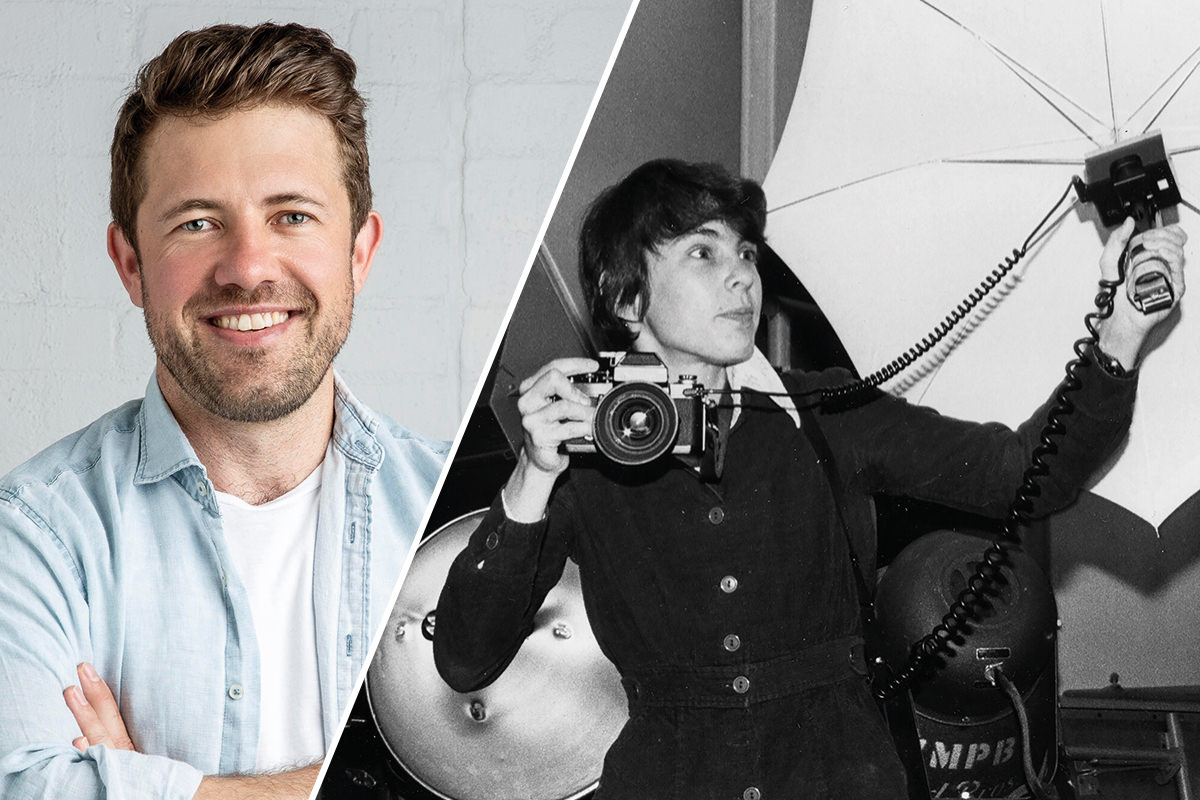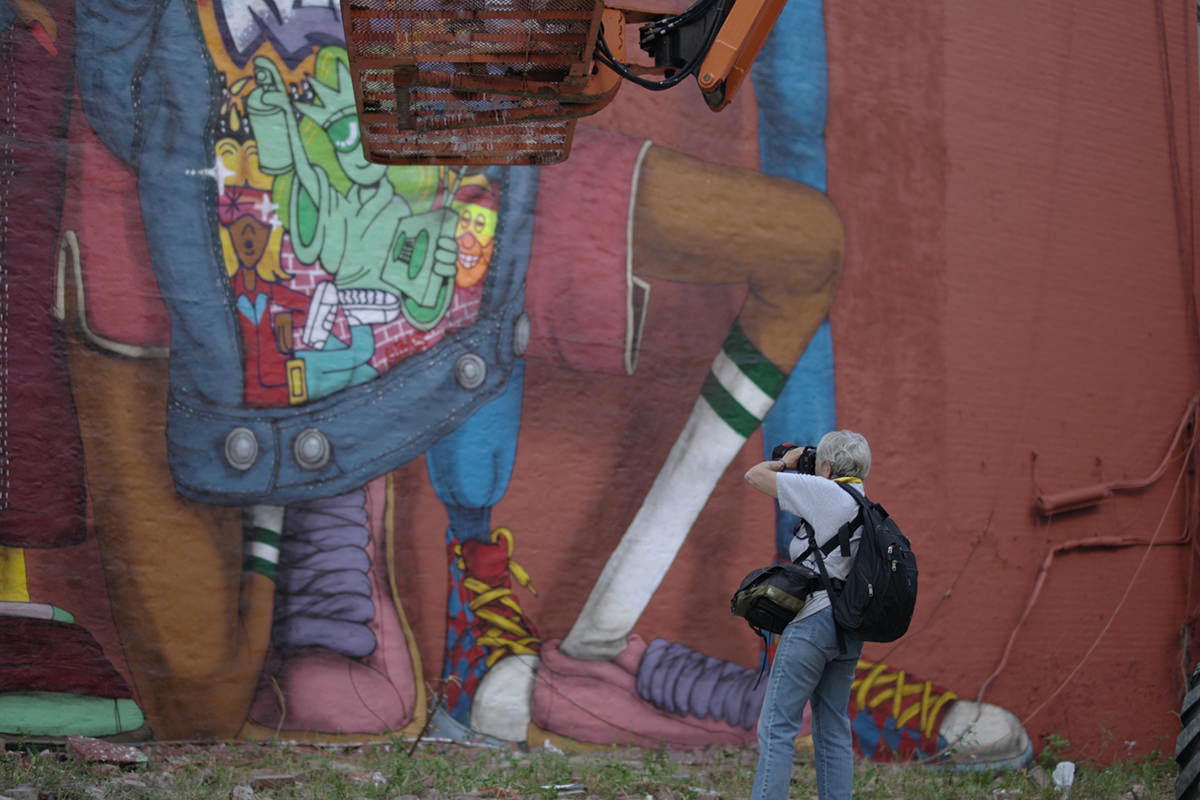Q&A: Martha producer on the state of doco
Producer Daniel Joyce on Martha: A Picture Story, the importance of festivals for documentaries, plus commissions vs acquisitions.
 Daniel Joyce, Martha Cooper
Daniel Joyce, Martha Cooper
Producer Daniel Joyce says a 10-minute sizzle reel became “the single most important bit of pitch material” they had for Martha: A Picture Story.
The documentary marks the debut feature for director Selina Miles and follows New York photographer Martha Cooper, who captured some of the first images of graffiti and subway street-art in the late 70s and went on to co-author a landmark book in 1984. Decades later, now 75, Martha realises the extent that her images have had on street art across the globe.
Joyce, who also produced the feature documentary Barbecue that Netflix released in 2017, says Miles brought a wealth of material to the table that helped them moving foward.
“It was a project where the director Selina Miles had spent about a year interviewing the main subject (Martha Cooper),” he says. “So we had a really great source of core footage to build a 10 minute sizzle reel from and that [created] a really rich, beautiful pitch material.”
Director Selina Miles
From that reel, the financing fell in place.
“Anybody who saw that could see how the film was going to attract an audience, and very clearly see the style Selina was cutting in. That meant that very quickly we were able to bring on an executive producer, a distributor, an international sales agent, and then ultimately the agencies which came on board, who were last to the party to some extent.”
After making its world premiere at Tribeca Film Festival, Martha: A Picture Story won the Audience Award for Best Documentary at Sydney Film Festival, travelled to film festivals in Melbourne, Brisbane, and to Cinefest Oz, and releases nationally in cinemas on 28 November.
“It's inspirational,” Joyce says. “It's an epic story about a woman who finds a new lease on life, just when people think that she's done and dusted. I think people are going to get that same feeling of hope and determination out of the film that is often really needed in documentaries.”
Called “eighty of the happiest minutes documentary-lovers are likely to spend in a theatre this year” by The Hollywood Reporter, if would appear Joyce isn’t alone in his assessment. But as with any project, it came with its ups and downs. Read on to hear more about producing Martha: A Picture Story and Joyce’s thoughts on documentary going forward.
From a producing point of view, what were the hurdles for Martha?
The challenging thing with this project and I think with many projects going forward is the producer has to keep the shoot rolling while they're putting the finance plan together. Everyone wants to see a rough cut before they put money in and even the funding agencies are becoming more conservative in taking early risks. So we had to independently cash flow the production through private investment and personal investment to just keep it going so that we could hit festival deadlines while we were cobbling together a finance plan. And that can be really stressful and not all producers are in a position to do that. But I think it's something that you have to consider when you're embarking on a project where you might not have all the money to make it at the start, and [you’ll need to] find ways to shoot key material as you go forward.
What role did film festivals play for the film?
Martha was fortunate enough to play at Tribeca Film Festival in New York. We only completed the film a week before we screened there. We literally flew in with the file. And the thing to realise about feature documentary festivals is that festivals are the main place you sell the documentary. It all happens at the world premiere. And after that, it's really diminishing returns for anything else you do sales wise. So you have to make sure that the world premiere is big and at a great festival and really prioritise that early. And that can mean that it can be very difficult to sometimes accept funding from Melbourne Film Festival or Adelaide Film Festival because you really want to preserve that world premiere.
 Martha: A Picture Story
Martha: A Picture Story
What are the benefits of developing in-house at your production company?
I think in Australia we're better positioned for development than a lot of other places in the world. Build[ing] a business where you've got some funding available to support government agency funding means that you can shoot for longer before you have to get a project financed. [It means] you can put together a better package and hopefully you can even take a film partly or finished to market. And that means you're going to be in a better negotiating position than if you were just at the very start of the process trying to pitch. So [if] we try to move towards a business model that has some profit at the end of it – that can be reinvested back into development. Otherwise, we're just fee based kind of hand-to-mouth existing. And I don't think that's a comfortable position for anyone.
What kind of development materials do you need to take a project to market?
More and more the trend today is shooting enough for a 10 or 15 minute reel of footage before you even pitch to the market. And that might mean $100,000 in development costs in shooting half a film before you've even got it financed. So that does put a lot of strain on the producer. I think partly it's looking to the funding agencies like Screen Australia and the state agencies to recognise that. And rather than just treatment writing, development (money) really goes into shoot. Also producers can go overseas to organisations like Cinereach or some of the other philanthropic funders to find ways to keep that shoot rolling as you get enough material to start pitching competitively to market.
[Editors note: This interview was conducted prior to the release of Screen Australia’s documentary funding Discussion Paper, which does include proposed changes to development.]
When working with streaming services, what are the benefits of getting a commission to make a documentary vs the acquisition of a completed project?
As a producer, I don't mind some risk and a little bit of a gamble in terms of financial opportunity. I think the people tend to want commissions because it feels secure and it feels safe, but the upside of those projects can be limited as well. If you can fund a project and then have it acquired out in an open market, then it can be worth a lot more than if Netflix or Amazon or whoever pays for it upfront. I think the biggest change that's going to happen that we all have to be really mindful of, is that right now there's a lot of SVOD companies competing for content, and that's going to change soon. They're going to consolidate and they'll also start turning in-house so they can be more secure about the content that they get. So we have to make sure that we use our really privileged position right now where we have funding to ensure that we're at the at the forefront of working with those companies.
What advice do you have for Australian documentarians?
What I'd say to any emerging producers or documentary filmmakers is just to be really ambitious. Think as big as possible and then convince people to help you realise that vision. I think the market is really rewarding bold visions at the moment and there's no point in aiming small, because no matter what you do, it's going to take up the rest of your life for the next few years. So be as zealous as possible.
What do you see for the future of Australian documentaries?
I think there's a huge opportunity for Australian producers to pitch to and make projects with some of the largest companies and talent in the world… I just hope that I can take advantage of it and I'd love to see just more positivity in the industry. I think that for all the difficulties and flaws of the system we have here, it still can be used to create really strong projects and give us the competitive edge over almost anyone else in the world.
Martha: A Picture Story releases in Australian cinemas through Umbrella Entertainment from 28 November. Watch the trailer here
Praise for Martha: A Picture Story
“A joyous look at a career devoted to witnessing everyday life.” – The Hollywood Reporter
“Directed with infectious zeal, it's a photographer bio-doc that always feels to be in motion, especially given its excellent editing, fascinating subject, and narrative ambition.” – RogerEbert.com
“Thoroughly engaging.” – Sydney Morning Herald
“Well-constructed and visually-sumptuous.” – TheAuReview.com
“One of the most joyous 80 minutes you will experience in a documentary.” - Moviehole

What to read next
We take a look at some fabulous (and free) online documentary titles funded by Screen Australia that are available to watch now.
10 Oct 2019
Georgia Hing